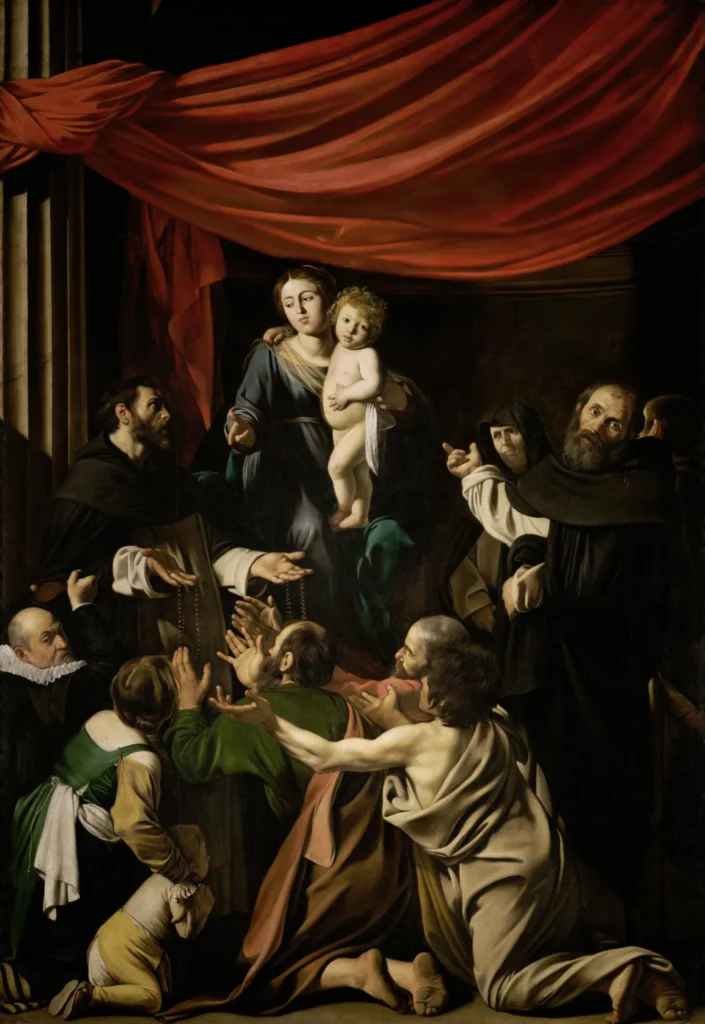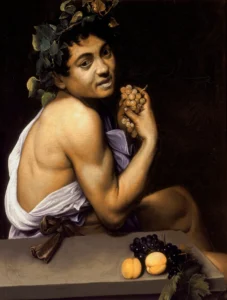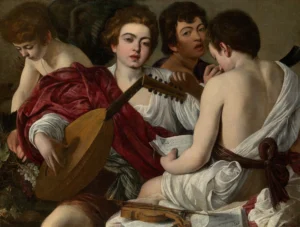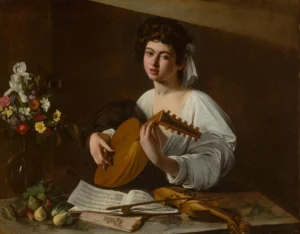Madonna of the Rosary (between 1605 and 1607)
The Madonna of the Rosary by Caravaggio, painted between 1605 and 1607, is a captivating depiction of the Virgin Mary and Child Jesus, flanked by St. Dominic and St. Peter the Martyr. This artwork's engaging composition features figures reaching for rosaries, symbolizing devotion. Caravaggio's signature play of light and shadow enhances the emotional resonance of this sacred scene, immersing viewers in its spiritual narrative.
1605 - 1607
About the Artwork
Did You Know
Liked what you see? Add it to your collection.
Enjoyed reading? Share it.
... continued
Composition and Iconography
The painting depicts the Virgin Mary and the Child Jesus enthroned, with St. Dominic, the founder of the Dominican Order, distributing rosaries to the faithful on Mary's instructions. On Mary's right, St. Dominic hands out rosaries, while on her left stands St. Peter the Martyr, recognizable by his head wound. In the foreground, several barefooted figures, including men and a woman with her child, are shown reaching to receive the rosaries.
Historical Context and Commission
The exact circumstances of the commission and the original patron of the painting are not well-documented. However, it is believed that the figure of the donor on the left, wearing a ruff, might be a portrait of the Principe Marzio Colonna, who was a protector of Caravaggio in the Alban Hills. This is suggested by the presence of a column (colonna) in the painting, which is a feature of the Colonna coat of arms.
Execution and Style
The painting is characterized by Caravaggio's use of intense contrasts of light and dark, which gives the figures a strong physical presence. The rosaries, which are the central objects of desire, are subtly placed in the shadows, making the brightly illuminated hands more dominant. This technique is typical of Caravaggio's realistic and non-idealizing style.
Provenance
The painting was first documented in 1607 when it was put up for sale in Naples. It was purchased by the Flemish painter Louis Finson and later acquired by a consortium of artists and art lovers, including Peter Paul Rubens, in Antwerp around 1619. The painting was then presented to the Dominican Church of St. Paul in Antwerp. In 1781, it was acquired by Emperor Joseph II for the imperial collection and is now housed at the Kunsthistorisches Museum in Vienna.
Date and Location of Creation
While the exact date is not certain, it is generally believed that the painting was executed between 1605 and 1607. There is some debate about whether it was begun in Rome or completed in Naples, given Caravaggio's movements during this period. However, the latest research suggests it was painted in Naples rather than Rome.










